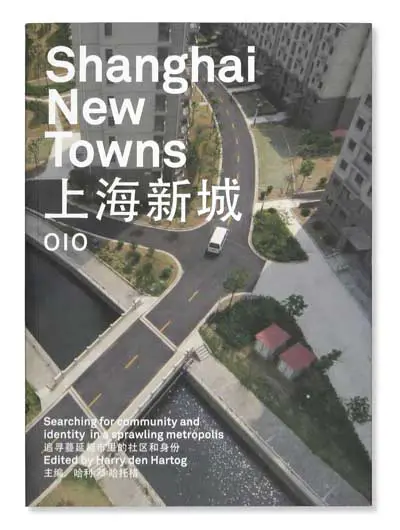 Rencontre de l'urbaniste Harry den Hartog, fondateur de Urban Langage * (2004), chercheur, éditeur et critique basé à Shanghai depuis Septembre 2011 et auteur de l'indispensable "Shanghai New Towns".
Rencontre de l'urbaniste Harry den Hartog, fondateur de Urban Langage * (2004), chercheur, éditeur et critique basé à Shanghai depuis Septembre 2011 et auteur de l'indispensable "Shanghai New Towns".Editions 010 Publishers, Rotterdam.
L'occasion de revenir dans le détail sur l'étonnant programme "One City Nine Towns" et la politique plannifiée de "multipolarisation de Shanghai" depuis 1990.
Extraits :
"The Yangtze River Delta is one of China`s most important areas for the cultivation of rice, the country’s principle staple food, and the delta also contains important water collection areas.
To reduce the problems caused by congestion and protect the countryside, since the late 1980s. decentralization and the development of compact new cities, new towns and new villages have been opted for. [...]
The new settlements are intended as a way to rechannel the enormous flow of economic migrants from the countryside and to rehouse a portion of the residents of the existing city in order to solve the problems of congestion and improve living standards?
In addition, ageing industrial plants are being relocated to suburban premises. To attract businesses and affluent residents, the new cities are seeking ways to differentiate themselves ranging from attractive financial terms to cultivating an international urban image through the use of' architecture.Already in 1999, a new Master Plan for Shanghai (1999-2020) was once again approved. In it. reference was made for the first time to the so-called 1-9-6-6 Model, whose strategy consisted of a refined hierarchic system foreseeing one Central City oriented toward the services sector, nine new decentralized ‘key cities' as administrative centers. one for each district/county (300.000—l,000,000 residents), sixty small towns (50,000-l50,000 residents) and six hundred central villages (averaging
2000 residents)." [...]
In 1999. the Master Plan for Shanghai (1999-2020) was modified in accordance with the goals of further opening up the city and developing it as rapidly as possible into a 'socialist modern international city’, with urban-rural integration and a multi-nuclear regional urban system as its spearheads. The goal: returning Shanghai to its status as international metropolis, just as in the beginning of the twentieth century. [...]
In the same year, the ‘One City, Nine Towns Development Plan` (1999-2020) was conceived as a pilot for the 1-9-6-6 strategy, in which one new city (an extension of the old satellite city. Songjiang. originally having 50.000 residents) and nine strategically located new towns (each with 30,000 -100,000 residents, equally distributed over the different districts), were worked out as an experiment. To enable the new towns to compete with the cosmopolitan qualities of the Central City. Mayor Liangyu Chen in 1999 proposed to assign these ‘pioneer projects’ a billboard function.
The international architectural style of the city centre would be extended to the suburbs with ‘European spatial. and architectural qualities`.Initially, Shanghai's Urban Planning Bureau, which was opposed to this decision, among other Things. because of` its unhappy association with the former concessions of ‘the old imperialist countries’. could exert little influence on this decision. However. the planners eventually recognized the opportunities in at heuristic international exchange of ideas with regard to design, construction and management. The quality of new construction and environmental standards must meet international standards. [...]
This use of themes can also be seen as a reaction to the lack of identity from which many new cities stiffer. Above all, though, it is a facile marketing strategy. and within and without China, the project has been subjected to needed criticism. Concerning the plan’s background and execution. many question marks have been left as a result of conflicting reports in the media. The thematically connoted locations are not complete cities, but limited portions such as a neighborhood or district within the larger context of a new town. or are sometimes even built in, or contiguous to, an existing centre. The thematically connoted parts have a germinal function, stimulating large-scale development."
* : " With Urban Language he works as researcher, editor, publicist, organizer, and designer. He frequently guides design workshops and gives lectures at various institutions and universities in the Netherlands and in China.
Urban Language has a special interest in urban issues, like urban-rural relationships, the meaning of public space, and the spatial effects of fast changing social and economic conditions and globalization.
Since the millennium Harry den Hartog regularly stays in China. After having lived in Suzhou and Hangzhou, he is again based in Shanghai. Since early he became a member of the editorial board for the magazine Urban China. He also works as a consultant on international affairs for Shanghai Etopia Building Development, a company that is closely related to the Tongji University in Shanghai.


Aucun commentaire:
Enregistrer un commentaire